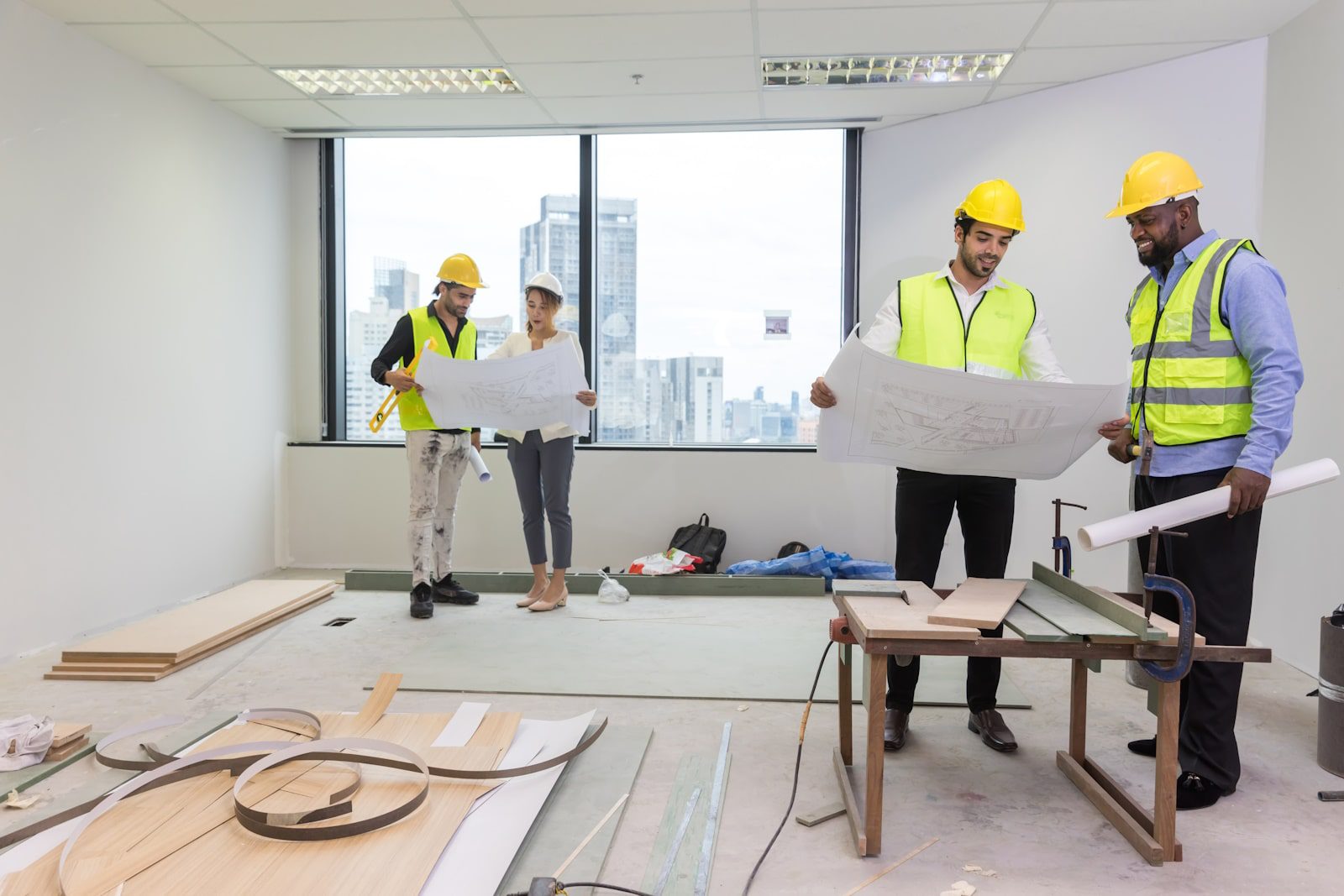
Interior Design Offices and Design-Led Refurbishments
Organisations in today’s fast-evolving work landscape are realising that office refurbishments offer more than just aesthetic improvements—they’re opportunities for strategic transformation. At the heart of this transformation lies design-led change management, a methodology that positions interior design as a catalyst for meaningful organisational evolution. This approach is rapidly gaining traction as companies increasingly recognise the powerful role of interior design offices in facilitating change, especially during periods of transition. From hybrid working shifts to cultural overhauls and rebranding efforts, design-led change management helps organisations navigate disruption while improving performance and well-being.
What Is Design-Led Change Management?
Design-led change management is the practice of using design principles and spatial planning to support and guide organisational change. Rather than simply reacting to change, this method uses interior design as a proactive tool that aligns workplace strategy with business objectives. It integrates architectural planning, workplace psychology, and user engagement to ensure that changes to physical environments translate into improved productivity, collaboration, and adaptability.
Interior design offices that use this approach see design not as an endpoint but as a journey—one that involves close collaboration with stakeholders, iteration based on employee feedback, and an ongoing commitment to evaluating the effectiveness of design choices.
Why Change Management Matters in Office Design
Office refurbishments often coincide with structural or operational changes. Without thoughtful management, these shifts can lead to confusion, resistance, and a dip in morale. Interior design offices are uniquely positioned to mitigate these risks by crafting spaces that intuitively support new behaviours and workflows.
Studies have shown that workspace quality directly influences employee satisfaction, engagement, and performance. According to research published in Journal of Environmental Psychology, changes in office design can have a tangible impact on job satisfaction and organisational commitment. For example, spaces that offer natural light, ergonomic workstations, and collaborative zones can reduce stress and increase output. Thus, strategic design becomes a conduit for positive behavioural change and higher retention rates.
Common Triggers for Design-Led Change
There are several catalysts that prompt organisations to re-evaluate their workspace:
- Mergers and Acquisitions: When two corporate cultures merge, office design can be used to create a unified, neutral environment that encourages integration.
- Hybrid Work Adoption: The post-pandemic shift to hybrid models demands flexible, multi-use spaces that support both remote and in-office collaboration.
- Cultural Shifts: As businesses strive to reflect more progressive, inclusive values, office design must evolve to support transparency and egalitarianism.
- Rebranding and Identity Refresh: A physical space that aligns with a company’s new brand identity reinforces its message internally and externally.
- Growth and Expansion: Scaling operations often requires spatial reconfiguration to accommodate larger teams and more complex workflows.
Interior design offices that understand these triggers can develop responsive environments that not only address present needs but also anticipate future demands.
Aligning Design with Organisational Strategy
Successful design-led change begins with strategic alignment. This means working closely with leadership teams to understand their vision, values, and performance objectives. For example, a company aiming to break down silos may opt for an open-plan layout with centralised communal areas. In contrast, an organisation that prioritises data confidentiality might need clearly zoned, private workspaces.
Interior design offices play a crucial role in translating these strategic aims into spatial solutions. Through workplace strategy workshops, needs analysis, and user journey mapping, designers can ensure every square metre contributes to organisational success.
The Role of Employee Engagement
Engaging employees early and consistently is essential. Change, even when positive, can create uncertainty. But when staff are involved in the design process—from surveys and focus groups to pilot zones and feedback loops—they’re more likely to embrace the changes and feel a sense of ownership over the new space.
This engagement not only fosters buy-in but often leads to more effective design outcomes. Employees are the ultimate users of a workspace; incorporating their perspectives helps ensure the final design is both functional and inspiring.
Key Principles of Design-Led Change Management
There are several core principles that guide successful change management in interior design offices:
- Transparency: Clearly communicate the purpose, timeline, and expected outcomes of the refurbishment.
- Inclusivity: Involve a diverse cross-section of the organisation in design decisions.
- Phased Rollouts: Introduce changes in stages to allow time for adjustment and feedback.
- Pilot Testing: Use mock-ups or test areas to gather real-world insights before full implementation.
- Responsive Iteration: Be open to refining the design based on post-occupancy evaluations and evolving needs.
These principles help reduce disruption and ensure the space remains relevant as the organisation grows.
Challenges and How to Overcome Them
Every refurbishment faces obstacles—tight timelines, limited budgets, and natural resistance to change. Design-led thinking helps overcome these hurdles by focusing on user needs, prioritising high-impact interventions, and remaining adaptable throughout the project.
For instance, budget constraints can be mitigated by investing in multi-functional furniture or repurposing existing assets. Resistance can be addressed through change champions and communication campaigns. The goal is always to deliver a space that adds value without overextending resources.
Conclusion
Design-led change management redefines how we think about office refurbishments. It places people at the centre of the process and leverages the expertise of interior design offices to create environments that support transformation, not just transition.
At Turnkey Interiors, we specialise in helping organisations navigate change through strategic design. Our team partners with clients to align space with purpose—ensuring that every project reflects the values, goals, and people at the heart of the business.
Ready to rethink your workspace? Contact us to find out how we can guide your office through meaningful, design-led change.



Leave a Reply